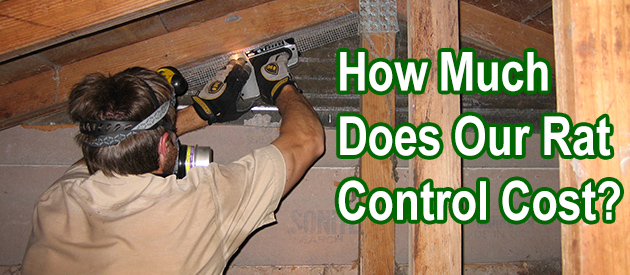Orange County, Orlando Rat Control Situation:
hi david, i came across your site... guess why? There's a rat between my unit (main level condo) and the upper unit. it runs up and down the chimney, across my ceiling in a soffit in a space about 4' wide x 12' long x 2' high. my handyman set 2 rat traps yesterday via removal of a can light ( also took photos of the feces to verify not squirrel). they both went off withing 20 minutes of setting but the creep didn't get caught even though there was a huge scuttle that sounded like the tasmanian devil. to find out, the handyman set the traps on top the 2x4. argh. it was quiet all night and just as soon as we thought it was scared away, the noise started up this morning. local exterminators want to drop pellets after an 'exterior inspection' for $300 - $400. (the squirrel catcher assessed the roof and grounds yesterday and yes there are a few places and probably more.) people who have poisoned rats that haven't been able to get outside say not to use poison because the animal stench is hideous and lasts up to 6 weeks. at the moment, the varmit is banging around up there, i guess walking around the traps. any suggestions? it's driving us crazy, esp when it gets aggitated or perhaps fending off a competitor - it literally sounds like a bar room brawl. thanks - gaylene
AAARGHH!!! Never use poison! It only makes the problem worse! You need to seal the entry holes and trap and remove the rats.
so i've seen what i think is a mouse in my son's room. It was a little bigger than the palm of my hand and grey. i live in a three story apartment complex in Winter Park and hear them in my walls at night. I had made a couple of holes at the bottom of each of my two bedrooms and the living room for my cable wire. I wanted to know how to get rid of them, which traps work best, how long does it take to get rid of them and how do i know if i got them all? any help would be greatly appriciated. thanks.
It's more likely a juvenile rat than a mouse in central FL. You need to have either the building sealed shut, or the inside areas leading into your apartment. Give me a call, and I can come inspect the apartment for free.
Orlando Rat Control Tip of The Week
Why Do Rats Chew On Wires?
Insulation, wires, straw, cardboard, paper, and different materials assist rodents with survival because they can utilize any of those things to build bigger homes, hone their teeth, and more.
Rats find it a lot simpler to chew wires, cable, wood, and even water warming pipes than most other materials because of their teeth. The chewing of wires and cables by rats has been identified as one of the main sources of blackouts in some homes. Out of these materials, wires appear to be the most attractive to rats and mice.
Why Do They Chew On Wires?
Let's review the most common issues relating to rats chewing on wires that some homeowners face every day:- Rodents don't go around searching for wires to chew on. They happen to get a kick out of the chance to stow away in places where other shrouded things are commonly found, for example, your home electric and security wiring system.
- One thing with wires is that they are all over the place, and rats have a nature to follow anything they can bite to keep their teeth from over developing. If they don't bite on wires, they will, in the long run, bite on everything else: glass, plastic, elastic, wood, aluminum, rock, and even concrete.
- Even though rats can chew anything, they love wire more when it comes to grinding their teeth. They can hold the wire as they chew, giving them more control. As you most likely know, rats and mice have sharp teeth, which keep growing unless they find a way to control the growth. This is why they choose wires.
- Keep in mind that rats and mice don't just chew on house wires. They also chew vehicle wires.


